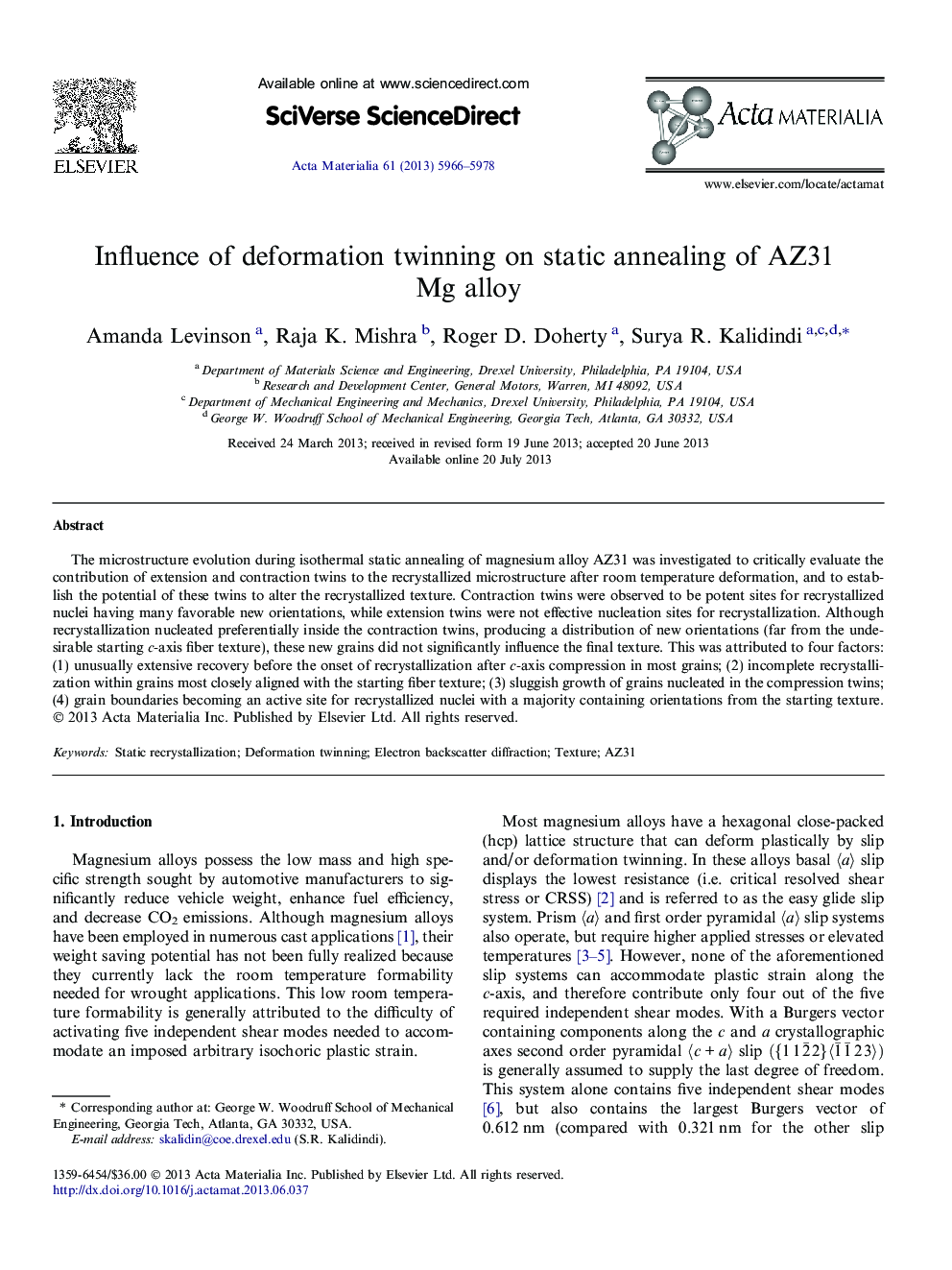| Article ID | Journal | Published Year | Pages | File Type |
|---|---|---|---|---|
| 1445854 | Acta Materialia | 2013 | 13 Pages |
The microstructure evolution during isothermal static annealing of magnesium alloy AZ31 was investigated to critically evaluate the contribution of extension and contraction twins to the recrystallized microstructure after room temperature deformation, and to establish the potential of these twins to alter the recrystallized texture. Contraction twins were observed to be potent sites for recrystallized nuclei having many favorable new orientations, while extension twins were not effective nucleation sites for recrystallization. Although recrystallization nucleated preferentially inside the contraction twins, producing a distribution of new orientations (far from the undesirable starting c-axis fiber texture), these new grains did not significantly influence the final texture. This was attributed to four factors: (1) unusually extensive recovery before the onset of recrystallization after c-axis compression in most grains; (2) incomplete recrystallization within grains most closely aligned with the starting fiber texture; (3) sluggish growth of grains nucleated in the compression twins; (4) grain boundaries becoming an active site for recrystallized nuclei with a majority containing orientations from the starting texture.
